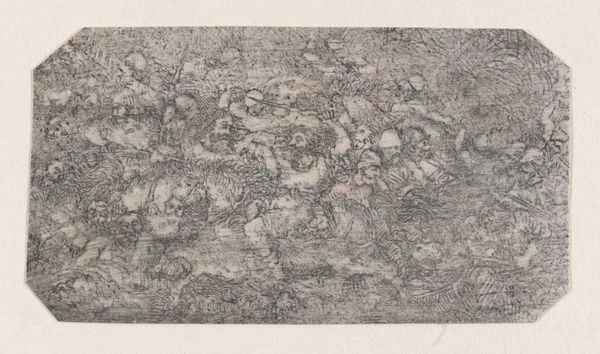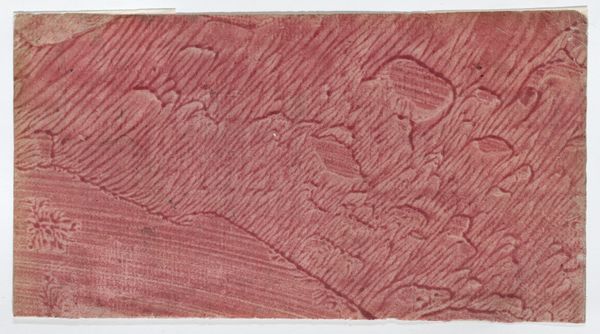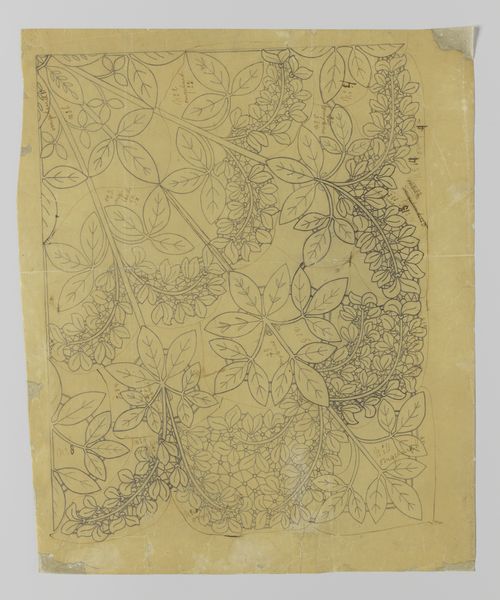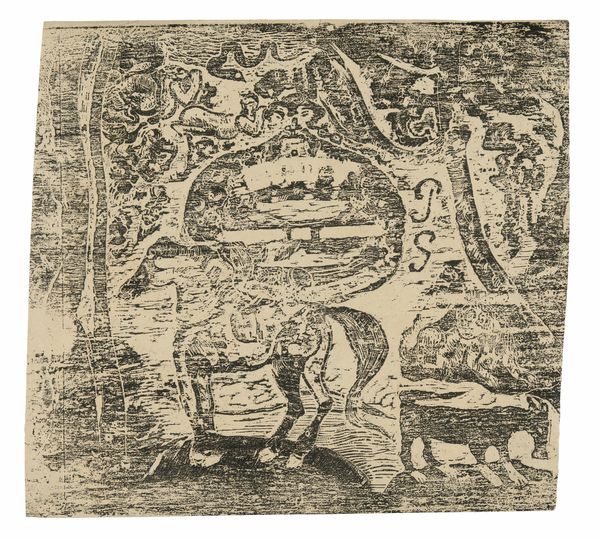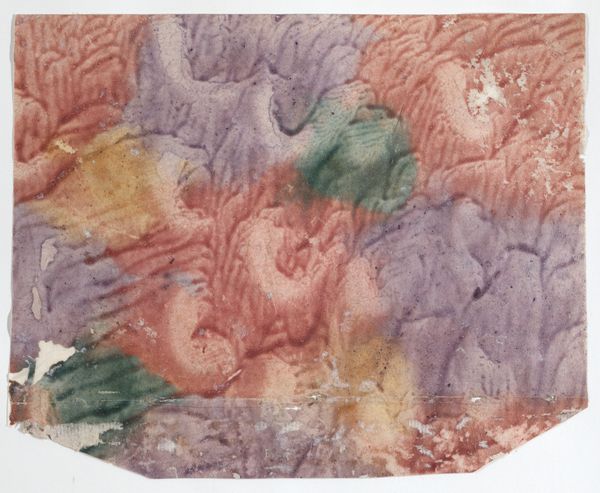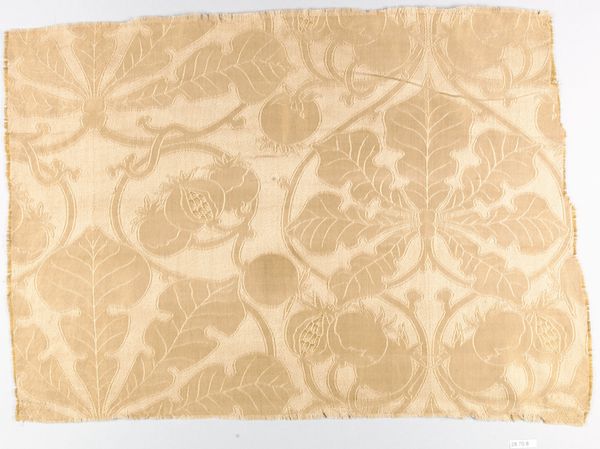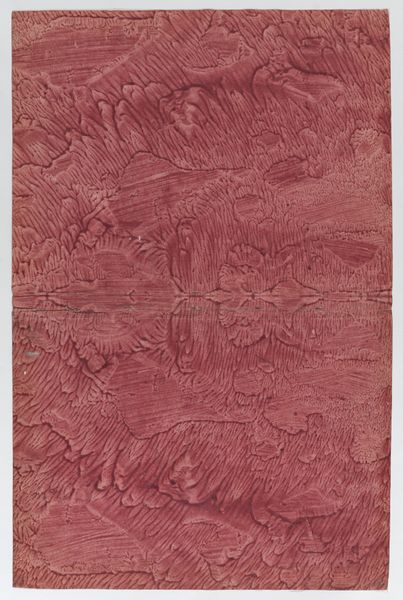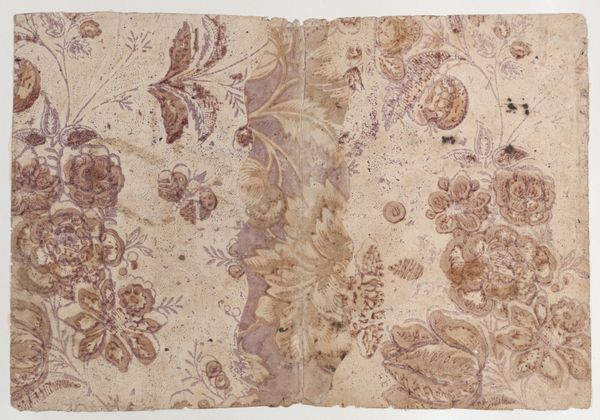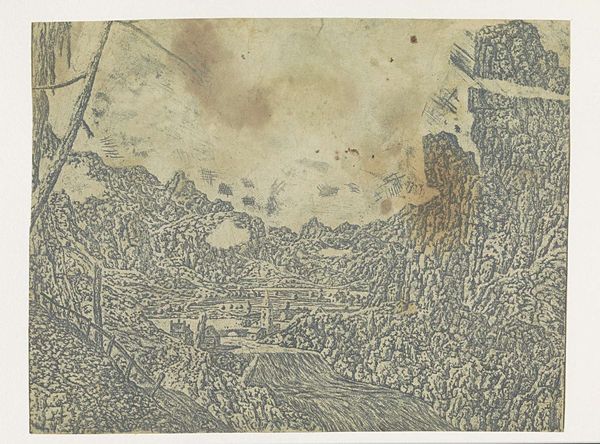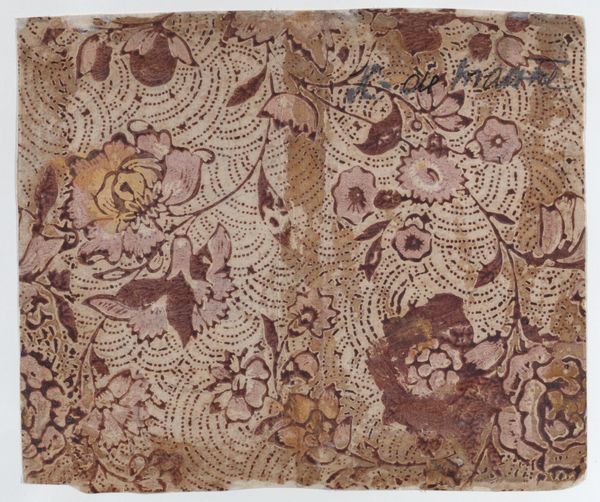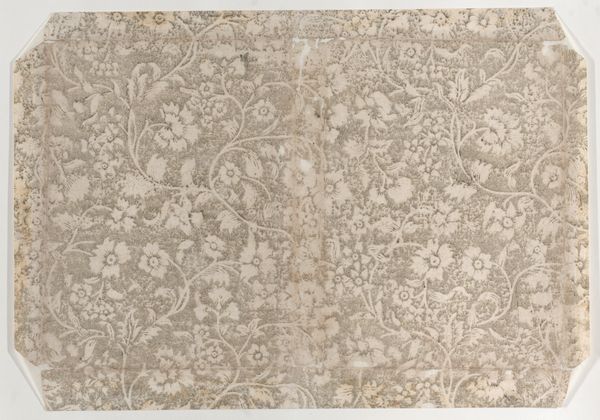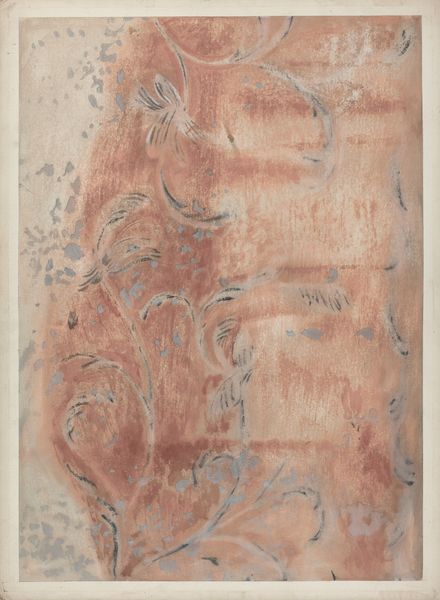
Sheet with floral pattern with dark background 1700 - 1800
0:00
0:00
drawing, print, woodblock-print
#
drawing
#
toned paper
#
abstract painting
# print
#
pattern
#
woodblock-print
#
geometric
#
watercolor
Dimensions: Sheet: 8 1/16 × 4 7/8 in. (20.4 × 12.4 cm)
Copyright: Public Domain
Curator: We're looking at an 18th-century woodblock print, titled "Sheet with floral pattern with dark background", currently residing at the Metropolitan Museum of Art. The artist is unknown. Editor: At first glance, it feels like peering into the gloom of a faded tapestry. Those crimson floral shapes have a somewhat haunted quality about them against that brooding background. Curator: Yes, the high contrast definitely creates a dramatic effect. As a print, this probably served as a sample piece or was bound into a pattern book for textiles, wallpaper or other decorative arts. What I find fascinating is that the image is achieved through a subtractive process. Imagine carving away at a woodblock, leaving only the negative space to receive the ink and impart that repeating floral design on paper. Editor: Subtractive, like the world's fanciest potato stamp! I immediately want to touch it. Look closer – that toned paper isn't smooth. There's texture there; each impression from the woodblock must have been so deliberate. Someone spent time on this process and those labor practices in print production probably reflects a rising commercial culture and access to such artworks. Curator: Exactly. Each print was hand-pressed, requiring both technical skill and physical exertion, marking a fascinating intersection of artistry and artisanal labor. Now, while it might seem strictly ornamental to modern eyes, pattern books like this facilitated the spread of design ideas globally. I also suspect the artist understood very well what we might today consider "happy accidents"—how ink bleeds or wood grain affects the image, lending an unintentional liveliness. Editor: Well, speaking of intention, it raises an interesting question. Was this primarily a utilitarian object, a tool for mass production? Or did the creator perceive a certain aesthetic merit, a distinct artistic flair, in these compositions and materials, elevated from their practical uses? What separates this from say a page from a pattern catalogue and artwork? Curator: I’d say that distinction depends on context and intention, then *and* now. Was it revered then as “high art”? Probably not. But by engaging with it today, considering its creation, use, and the impact of materials and techniques, we reveal the layered meanings, even beauty, inherent in what might otherwise be seen as a purely functional object. Editor: Food for thought. I might revisit that gloomy description—perhaps "brooding elegance" is more appropriate? Curator: "Brooding elegance" it is. A fine way to close our examination of this unassuming yet surprisingly resonant little sheet.
Comments
No comments
Be the first to comment and join the conversation on the ultimate creative platform.

